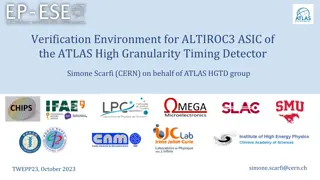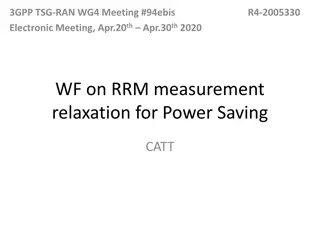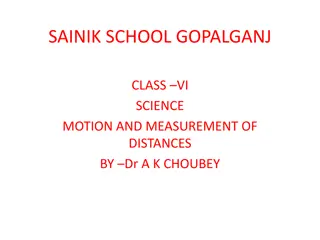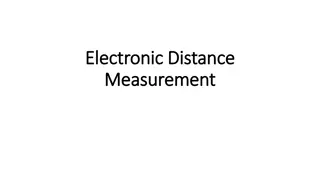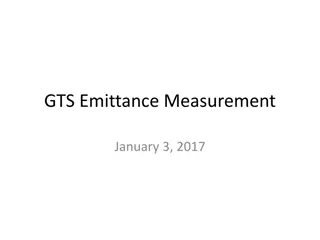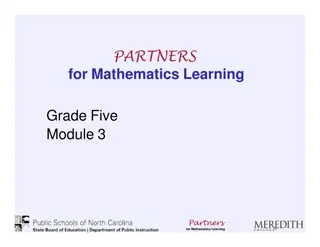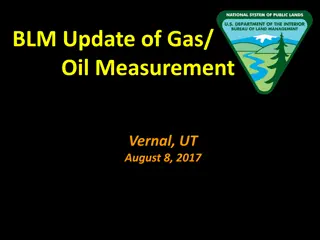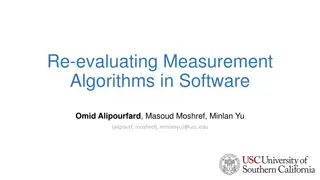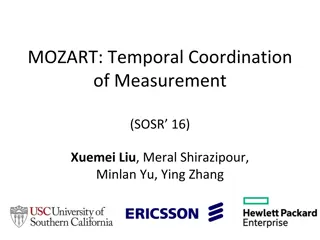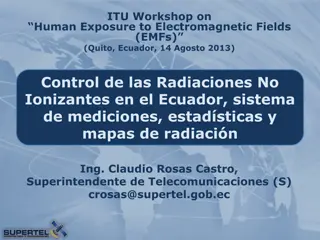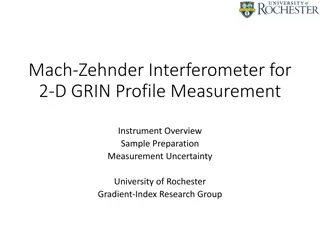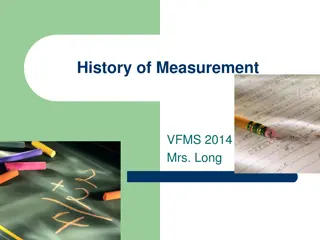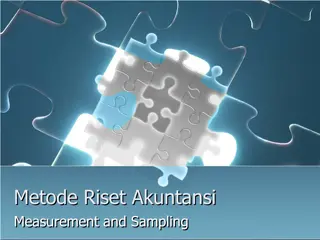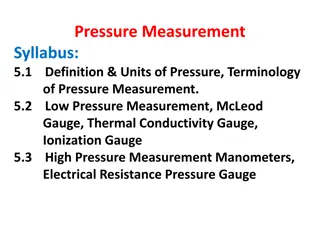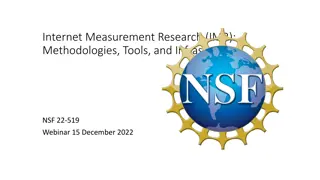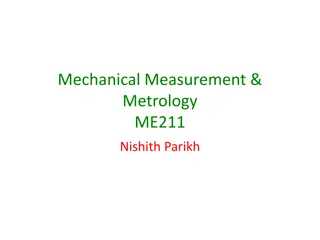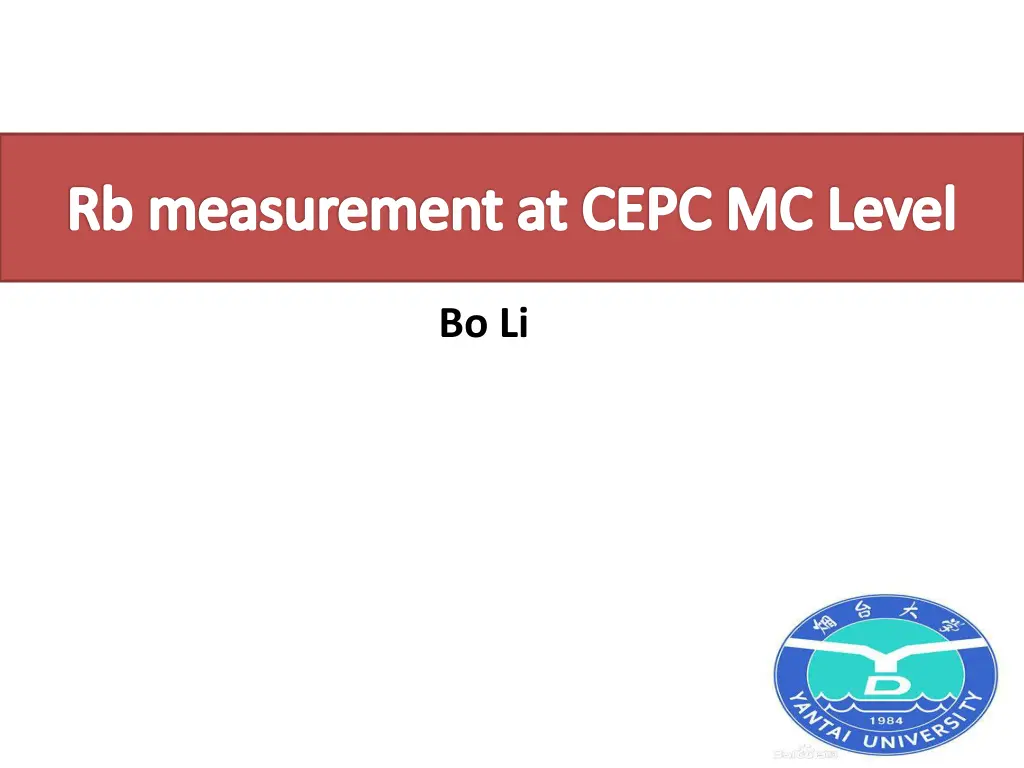
Rb Measurement at CEPC MC Level
"Explore Rb measurement at the MC level of CEPC, focusing on b-tagging methods, performance, and effects of different variables. Discover the relative decay width of Z into b quarks and learn about the Double Tagging Method used in the analysis."
Download Presentation

Please find below an Image/Link to download the presentation.
The content on the website is provided AS IS for your information and personal use only. It may not be sold, licensed, or shared on other websites without obtaining consent from the author. If you encounter any issues during the download, it is possible that the publisher has removed the file from their server.
You are allowed to download the files provided on this website for personal or commercial use, subject to the condition that they are used lawfully. All files are the property of their respective owners.
The content on the website is provided AS IS for your information and personal use only. It may not be sold, licensed, or shared on other websites without obtaining consent from the author.
E N D
Presentation Transcript
Outline Introduction Rb Double tagging method B-tagging performance Method I/O test Effect of c, udsand Cb 2
Introduction Rb: the relative decay width of Z into b quarks Based on the CEPC MC samples: Zbb, Zcc, Zuds Produced from FSClasser ~110k events By using the Double tagging method 3
Introduction Double Tagging Method The two jets are divided into two hemispheres according to the plane perpendicular to the thrust axis Double tagging method : The ratio of one jet tagged as b jet The ratio of both jets tagged as b jets ?? 2? ?? ??? ? ?? = ????+ ????+ 1 ?? ?????? 2+ ??????2+ ????1 ?? ?????? 2 = ?????? The ????,?? ????,??, ?? ?? ????are gotten from MC samples The ??, ???, ? ??are gotten from DATA samples 4
Rb method Double Tagging Method ?? ?? ?????? ?? ???? Get from MC ?? = ????+ ????+ 1 ?? ?????? 2? ?? ??? ? ?? ?2??? ?????? (?1??? ??????)2 2+ ??????2+ ????1 ?? ?????? 2 = ?????? ??= LEP measurement 0.21594 0.00066 Syst error : ~0.2% Major systematics is hemisphere tag correlations CEPC Expected Syst error (0.02%) hemisphere tag correlations depends on b tagging efficiency with a high b-tagging efficiency above 80% and rejection of charm and light jet above 90%
Rb method Double Tagging Method ?? ?? ?????? ?? ???? Get from MC Get From Mixed MC Sample ?? = ????+ ????+ 1 ?? ?????? 2? ?? ??? ? ?? ?2??? ?????? (?1??? ??????)2 2+ ??????2+ ????1 ?? ?????? 2 = ?????? ??= ?? = ?????+ ?????+ 1 ?? ??????? The ratio of jet tagged as b jet in Hemisphere I ? ?? ?? ? ?? = ?????+ ?????+ 1 ?? ??????? The ratio of jet tagged as b jet in Hemisphere J ??=?2??? ?????? ?????? 6
B-tagging method The default algorithm is based on the LCFIPlus: combines more than 60 variables to calculate the b jet probability by BDT method B-tagging method for hemisphere I: Calculating the b jet probability based on the number of vertex B-tagging method for hemisphere J: Calculating the b jet probability based on the number of lepton(we set >=1 lepton) 7
B-tagging method B-tagging method for hemisphere I: Calculating the b jet probability based on the number of vertex b jet efficiency and c, light jet rejection >0.45 >0.5 >0.6 >0.7 >0.8 >0.9 8
B-tagging method B-tagging method for hemisphere J: Calculating the b jet probability based on the number of lepton 9
2D B_likelihood Correlation Factor zbb ??=?2??? ?????? ?????? I : Prob>0.45 >0.5 >0.6 >0.7 >0.8 >0.9 hemisphere I J : Prob>0.45 >0.5 >0.6 >0.7 >0.8 >0.9 hemisphere J Working point J Working point I Correlation Factors ~ 1 10
Rb method I/O test The ratio of jet tagged as b jet in Hemisphere I The ratio of jet tagged as b jet in Hemisphere J Following this procedure, we can meausere the Rb, b 11 The Z hadronic pseudo DATA is mixed by MC samples: Zbb sample, Zcc sample, Zll sample We set Rb=0.2, Rb=0.4, Rb=0.6 as the Input Rb to mix the DATA 11
Method I/O test Input Rb=0.2, 0.4, 0.6. Btag work points: Prob>0.45 >0.5 >0.6 >0.7 >0.8 >0.9 Input Rb=0.2 Input Rb=0.4 Input Rb=0.6 12
Method Effect of c udsand Cb Input theory Rb=0.2158, Btag Prob work points: Prob>0.45 >0.5 >0.6 >0.7 >0.8 >0.9 I/O test with c 10%, uds 10%, Cb 10% (Measured Rb-0.2158)/0.2158 Prob>0.45 Prob>0.50 Prob>0.60 Prob>0.70 Prob>0.8 Prob>0.9 c 10% uds 10% Cb 10% 1.03% 0.82% 0.51% 0.31% 0.18% 0.08% 0.36% 0.29% 0.19% 0.13% 0.09% 0.06% 10.54% 10.51% 10.47% 10.45% 10.43% 10.42% 13
Plan Both the B-tagging efficiency for Z->bb and rejection for Z->cc, Z->uds are good for method The double tagging method procedure works well as shown in I/O test The b tagging correlation factors ~ 1 Next step : Increase the statistics to reduce the effect from c Study on the systematic errors such as the gluon splitting, charm physics modeling udsand Cb 14
Back up 15
Method Effect of Cb Follow the procedure in : Measurement of Rb and Br(b X) at LEP Using Double-Tag Methods (L3 Collaboration) In section 4.3.3 Systematics from Hemisphere Correlation 1. The normalized distribution of for all hemispheres, N( ). 2. The single-hemisphere tagging efficiency as a function of , ( ). 3. The normalized distribution of in a co-tagged hemisphere, C( ). A co-tagged hemisphere is the one opposite to a tagged hemisphere, regardless of whether it is itself tagged. Angular effects: =cos ; = QCD effects: =Energy_jet 16
Method Effect of Cb I : Prob>0.45 J : Prob>0.45 pt : 1.00904 d0: 0.99996 z0 : 1.00035 signd0 : 1.00074 signz0 : 0.999531 Thrust : 1.0032 Thrust_theta : 1.0021 Thrust_phi : 1.00006 Energy : 1.00149 Px : 1.00171 Py : Pz : ntrk : nclu : charge : mass : 1.00031 Ptot : 1.00449 Rapidity : 1.00563 1.00154 1.00086 0.999593 0.99983 1.00037 17
Method Effect of Cb I : Prob>0.45 J : Prob>0.45 : Jet_Pt pt : 1.00904 18
Method Effect of Cb I : Prob>0.45 J : Prob>0.45 : Thrust Thrust : 1.0032 19
Method Effect of Cb I : Prob>0.45 J : Prob>0.45 Thrust_theta : 1.0021 20
Method Effect of Cb I : Prob>0.45 J : Prob>0.45 : Jet_ 21
Method Effect of Cb I : Prob>0.45 J : Prob>0.45 Thrust_phi : 1.00006 22
Method Effect of Cb I : Prob>0.45 J : Prob>0.45 : Jet_mass 23
Method Effect of Cb I : Prob>0.9 J : Prob>0.9 pt : d0 : z0 : signd0 : signz0 : Thrust : Thrust_theta : Thrust_phi : Energy : Px : Py : Pz : ntrk : nclu : charge : mass : Ptot : Rapidity : 1.04939 1.0004 1.0044 1.00092 0.998709 1.00788 1.02492 0.999965 1.00962 1.01379 1.01177 1.01045 1.00303 1.00089 1.00152 1.00137 1.01527 1.032 24
Check the measured Rb and effb in DATA are different from the Input Truth Rb and effb at Prob>0.9 The ?? ??, ?? So if DATA sample1 sample2 which means the MC ?? ??, ?? ?? ????is different from the DATA ?? ????is got by MC samples: Zbbsample2, Zccsample2, Zllsample2 1. ??difference between DATA and MC are very small The difference as a Ratio: Eff in DATA / Eff in MC 2. ??and ????differences are big at Prob>0.9 : which may come from the very low statistics after B-tagging which will lead to the difference in the IO test 3. ????effect is very small, as The Zllrejction at four work point are ~100% 25
Check Input Rb=0.3 We redo the IO test by DATA and MC with same Zcc sample Zcc DATA Sample Zcc MC Sample Zcc DATA Sample= Zcc MC Sample We can see the differences of measured Rb and effb between DATA and MC are smaller 26
Check Input Rb=0.5 Zcc DATA Sample= Zcc MC Sample 27
Check Input Rb=0.7 Zcc DATA Sample= Zcc MC Sample 28

